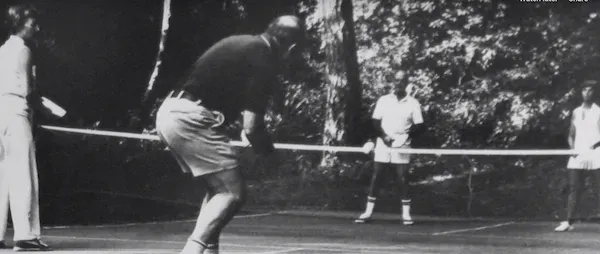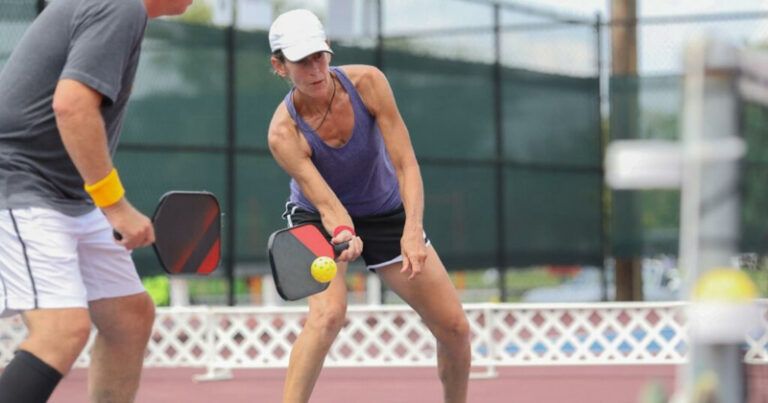The rise of professional pickleball
The sport of pickleball has witnessed an exponential rise in popularity over the past few years, evolving from a backyard activity to a recognized professional competition. This transformation has been fueled by its accessibility and the unique blend of tennis, badminton, and ping-pong that the game offers. As the saying goes, "You never forget how to play," but for many, learning to compete is an entirely different endeavor.
From backyard game to professional sport
Pickleball began in 1965 when Joel Pritchard, his friend Bill Bell, and Pritchard's son created a simple game to entertain bored children. They fashioned equipment from what they had on hand, leading to an informal yet engaging sport. Fast forward to today, and pickleball has metamorphosed into a sporting phenomenon. New generations are drawn to its blend of social interaction and competitive spirit, often likening it to a dance where strategy plays an equally vital role as skill.

This evolution has paved the way for various professional tours that showcase the sport globally, including the Professional Pickleball Association (PPA) and the Association of Pickleball Professionals (APP).
The emergence of professional tours
The establishment of structured tours, such as the PPA Tour and the APP Tour, has propelled professional pickleball into the limelight. These tours host various tournaments across the United States, creating a competitive circuit where athletes can showcase their talents. The tournaments vary in format and size, leading to significant prize pools that contribute to players’ incomes. For instance, Major League Pickleball (MLP) projected a total prize money pool of $5 million for six events in 2023.
This burgeoning competitive landscape offers substantial earning potential for players, marking pickleball as a legitimate career choice for many athletes seeking new avenues after their stints in other professional sports.
A new breed of athletes
The influx of athletes from other sports has also contributed to pickleball's growth. Former tennis players, badminton players, and even some elite athletes from racquetball have made the transition, bringing with them honed skills and competitive drive. The transition isn’t just about changing sports; it’s about harnessing the expertise accumulated over years of training and competition while applying it to a rapidly growing field.
How Much Do Pro Pickleball Players Make? Decoding the income streams
Earning a living in professional pickleball doesn’t solely hinge on tournament winnings. While prize money plays a critical role, athletes must manage various income streams. This multifaceted approach mirrors entrepreneurial tactics where diversification fosters sustainability.

Tournament prize money: The ultimate goal
For most players, competing in tournaments represents an essential revenue stream. Prize pools vary widely depending on the event's prestige and sponsorships. For instance, during the 2024 US Open Pickleball Championships, prize money reached upwards of $150,100 for top finishers, while emerging competitions like the APP and PPA tournaments continue to increase prize pools, reflecting growing interest and participation
Players understanding the intricacies of prize distribution knowing that winning is paramount but not the only metric of success is vital in navigating this competitive landscape. Many major events now feature guaranteed payouts or appearance fees, ensuring that players can still benefit financially even with moderate performance.

Sponsorships and endorsements: A lucrative avenue
Sponsorships significantly bolster the income of professional pickleball players. As the sport's visibility increases, so does interest from brands eager to connect with the dedicated and expanding fanbase. Players can secure endorsement contracts for equipment such as paddles and apparel or even lifestyle products. Notably, prominent brands like Selkirk, Paddletek, and Joola have embraced the sport, offering lucrative partnerships.
Creating a distinct personal brand becomes indispensable in attracting these opportunities. Much like a delicate canvas, a player’s image must be crafted with thoughtful strokes: social media presence, community engagement, and performance results weave together to create compelling narratives that resonate with sponsors and fans alike.

Coaching and clinics: Sharing expertise for profit
Beyond competitive play, many professional athletes amplify their earnings through coaching and clinics. The demand for pickleball education, particularly in regions where the sport is burgeoning, creates ample opportunity. Coaches can opt for various formats, serving private clients, leading group sessions, or conducting specialized camps tailored to different skill levels.

Factors influencing coaching rates include a player’s experience and market demand. For example, Tyson McGuffin, a top player, capitalizes on his reputation by offering clinics that attract significant participation. In an era where everyone seeks expert guidance, skilled athletes can transform their knowledge into substantial income.
What's the average pro pickleball player salary?
Understanding salary ranges among professional pickleball players is essential for those pondering a career in the sport. Various data sources, including insights gleaned from industry stakeholders, illustrate a spectrum of earnings reflective of players’ levels of achievement, skill, and marketability.
Salary ranges: From top earners to up-and-comers
Recent statistics indicate the average annual salary for a pickleball pro in the United States hovers around $112,707, with the median income aligning closely with this figure. Players who excel in tournaments and create partnerships will often find themselves earning between $20,000 and $250,000 annually. However, the elite, like Ben Johns and Anna Leigh Waters, may exceed $1 million, largely supported by consistent performance and strategic marketing.

This variance highlights the fact that not all players experience equal financial success. Factors contributing to this disparity include player rankings, tournament performance, and the effectiveness of their personal branding efforts a challenge akin to navigating a labyrinth where each decision influences the ultimate outcome.
Pickleball's millionaires: Unveiling the top earners
Among the most notable figures in pickleball, Ben Johns has garnered widespread recognition not only for his exceptional skills but also for his impressive income. With a blend of prize money, sponsorships, and media deals, his estimated annual earnings soar into the seven-figure range. Likewise, Anna Leigh Waters has emerged as another top performer today, showcasing her prowess alongside significant commercial success.
These success stories illuminate the potential that lies within the professional landscape of pickleball, but they also underscore the fact that such heights require immense dedication, talent, and an astute approach to business.
The gender pay gap: Addressing disparities in earnings
While the opportunities in professional pickleball are expansive, significant disparities exist between male and female athletes. Existing data reveals that female players often earn less than their male counterparts, primarily stemming from differences in sponsorship opportunities and media attention.
Efforts are underway to address these gaps, promoting initiatives aimed at enhancing visibility for women in the sport and advocating for equitable compensation. The journey toward gender equity in professional pickleball is an evolving narrative, mirroring broader societal conversations around fairness and recognition.
The financial realities of playing pickleball professionally
Delving deeper into the financial landscape, one must confront the costs associated with pursuing a professional career in pickleball. Aspiring athletes should approach their ambitions with full awareness of the potential challenges and expenses involved akin to navigating choppy waters; preparation is vital to staying afloat.
The price of passion: Understanding the costs involved
To pursue professional pickleball, players face various expenses, from travel and accommodation to tournament fees and equipment purchases. Without careful financial planning, even the most passionate athletes may find their ambitions financially unsustainable.
As crucial as securing tournament wins is establishing a budget, ensuring that funds may be allocated wisely. Expenses related to coaching and training can add up, necessitating a robust financial strategy to manage costs effectively. Creating a thorough budget not only fosters responsibility but also promotes longevity in a demanding career.
Challenges for aspiring pros: Navigating a competitive landscape
Mid-tier and lower-tier players face a unique set of challenges in making pickleball their profession. Generating sustainable income in a competitive landscape requires not only talent but also strategic planning.
Players may find themselves in a position where they must compete vigorously for limited resources. Embracing financial disciplines and diversifying income sources, such as offering lessons or creating digital content, can provide necessary financial relief. The balance between passion and practicality becomes a delicate act for these aspiring pros.
Balancing passion and profit: The importance of financial literacy
Developing financial literacy is crucial for any professional pickleball player who wishes to thrive in their chosen path. Understanding the intricacies of income management, tax obligations, and long-term financial planning propels athletes toward making informed decisions.
Resources tailored specifically for athletes exist in abundance from online courses and financial planning workshops to mentorship from experienced professionals. The journey toward financial literacy may seem daunting, but it is a vital skill set that can ensure a player's success transcends their on-court achievements.
Building your brand: Strategies for success in pro pickleball
A professional athlete’s journey extends beyond the playing court and demands careful crafting of a personal brand capable of attracting sponsorships and fostering community engagement.
Crafting your online presence: The power of social media
Creating an impactful online presence is paramount for aspiring pro pickleball players seeking to carve out their niche in the market. Social media platforms like Instagram, TikTok, and YouTube are invaluable tools for engaging with fans, showcasing skills, and capturing sponsorship interest.
Players should focus on producing engaging content that reflects their personalities while highlighting their playing styles. Consistent interaction with followers builds a sense of community and loyalty, vital aspects for attracting sponsors and enhancing visibility.
Attracting sponsors: Crafting a compelling pitch
A targeted approach toward sponsorship opportunities can yield significant dividends for pro players. Identifying companies aligned with their personal values and vision enhances chances of securing lucrative deals. However, attracting sponsors requires more than just talent; it requires thoughtful proposals that highlight a player's potential audience, engagement rates, and shared values.
Players must be prepared to present quantifiable metrics about their reach to demonstrate their value to potential partners effectively. Crafting a compelling sponsorship pitch positions players as attractive investments for brands looking to engage with a burgeoning sports audience.
Launching your coaching empire: Building a sustainable business
With so much potential in the realm of coaching, many professional players can transform their expertise into a flourishing business. Setting up a coaching enterprise involves identifying market needs and tailoring services to potential clients, whether through private lessons or specialized clinics.
Effective marketing and building a strong reputation translate directly to attracting clients. Successful coaches often find that sharing their experiences during playing careers resonates, positioning them as credible figures in the sport, thus ensuring a successful transition from athlete to coach.
The future of pickleball earnings: Growth, opportunities, and challenges
As pickleball continues to gain momentum, the future seems replete with growth opportunities for professional players. The evolving landscape holds promise, yet challenges remain. As the sport’s popularity surges, so do expectations.
Riding the wave of popularity: Projected growth in pickleball
The increasing visibility of pickleball suggests an upward trend for earnings in the sport. Sponsored tournaments and broadcasting deals will likely contribute to rising prize pools, enhancing players’ income potential. An ever-growing base of recreational players enhances the professional pipeline, fostering increased competition and heightened interest.
Players must be prepared to adapt as the space becomes more crowded. Strategic foresight and flexibility will determine who manages to thrive in this dynamic environment.
Expanding horizons: The global rise of pickleball
Sporting propagation is now shifting globally. As nations begin to embrace pickleball, international competitions are emerging, providing additional platforms for athletes. This global rise creates a landscape where players can reach new markets, participating in events that amplify their visibility and bolster potential earnings.
As pickleball's reach extends beyond the United States, the resulting landscape fosters new revenue streams, opening opportunities for players to engage with emerging markets.
Navigating a dynamic landscape: Adaptability and financial savvy
Navigating the nuances of a rapidly evolving professional pickleball environment requires not only athletic prowess but also a keen understanding of financial markets. Athletes will find success adopting adaptable business models that can respond to projected growth and changing dynamics within the sport.
Resources for aspiring pro pickleball players
For aspiring pro pickleball players, numerous resources exist to support their journey. Here’s a comprehensive list to navigate:
- Professional Pickleball Organizations:
-
- Professional Pickleball Association (PPA)
- Association of Pickleball Professionals (APP)
- Major League Pickleball (MLP)
- Tournament Schedules and Registration Information:
- Check local pickleball associations and national websites for upcoming events.
- Sponsorship and Endorsement Opportunities:
- Research brands actively engaging with pickleball.
- Attend industry events to network.
- Coaching and Training Resources:
- ATP Tennis Coaching
- The Professional Pickleball Coaches Association (PPCA) for additional credentials and training resources.
In conclusion, professional pickleball presents a viable career path for many athletes, yet navigating its financial realities requires a multifaceted approach. As this sport continues to evolve, so must the strategies for success ensuring expertise within the game translates into fulfilling financial opportunities. Understanding the indicators of income and proactive financial management equip players for the future, allowing them to pursue their passions while building sustainable careers. With growth expected, now is an exciting time to engage in the world of professional pickleball.










